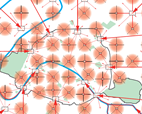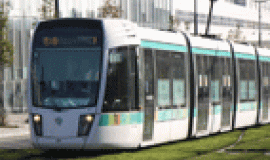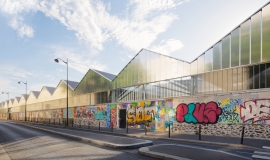
By adopting the new Goods Charter complete with 80 signatories on 18 September 2013, the City of Paris declared its willingness to encourage urban distribution companies to explore new methods of delivery which would take air quality and the environment more into account.
However, the organisation of urban distribution constitutes a system which is particularly complex to describe, grasp and therefore to modify. This complexity derives from a combination of interactions between phenomena operating in separate areas: demand in proportion to economic activity, both of which change all the time; an organisation which relies on non-dedicated transport networks and logistical sites forced to adapt to changes in the current urban fabric; transport systems that respond to a demand which varies as regards quality, quantity, service provided, etc… Furthermore, whatever the factors involved in the organisation of goods distribution operations, ultimately they are always responding to a demand by the final customer, be they professional (shop, business, trade,…) or individual. This demand changes according to demographic and economic factors.
The subject of this study is the drawing up of a logistical orientation model for Paris with a focus, in this first instalment, on both getting an understanding of the sector and exploiting all available data, and on putting forward an action plan based on improving and increasing available logistical spaces and addressing the issue of them working as a network.
Finally, after studying all the contextual factors and the major organisational changes in progress, this document makes a non-exhaustive, quantitative evaluation of needs in terms of logistical spaces in Paris and puts forward possible locations.




